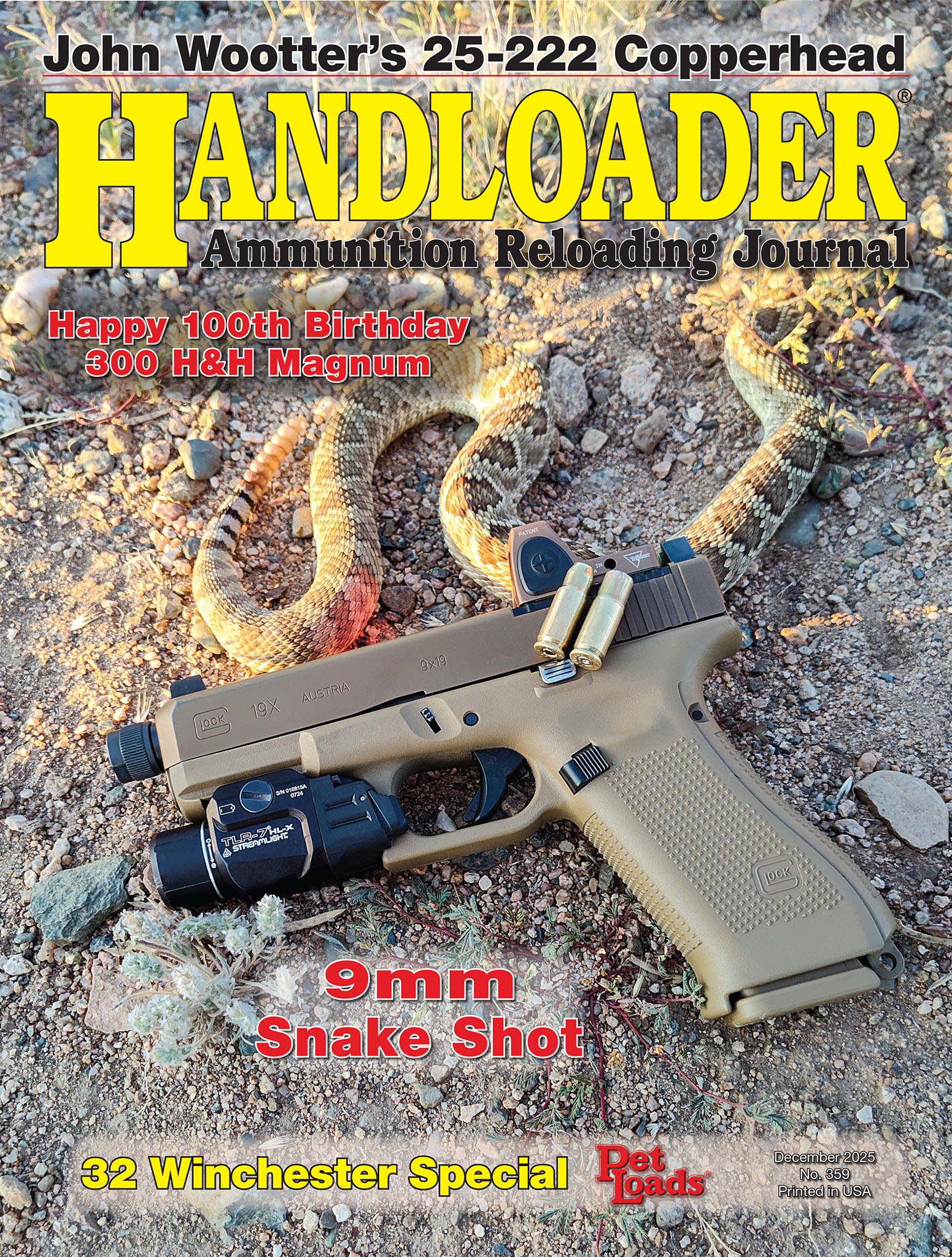
Hunting handloads were worked up using a Custom Remington 700 chambered in 280 AI. The rifle was built by Dave Fink of Fink’s Custom Gunsmithing.
Handloading and hunting have always gone hand in hand for me, it was the original purpose behind my reason for handloading. About three years ago, I wrote my first "Reloader’s Press" column in Handloader magazine, talking about a 10-year-old me, handloading for my first elk hunt and my first centerfire rifle, a Remington Model Seven chambered in 260 Remington. Much of the column was about the experience earned with that rifle and continuing my education and knowledge of handloading.
Many advancements have been made in both external and internal ballistics since the 10-year-old me started a lifelong passion for crafting cartridges. Garmin now makes a chronograph that fits in a pocket, and setup is as simple as slapping it on the bench and shooting. The fact that ballistic coefficient (BC) is not just a static number written on the side of a box and that it can change from shot to shot is more easily understood and documented thanks to products like the System 89 from Oehler-Reseach, as well as Doppler radar capable of tracking a bullet’s flight. With such great strides in technology and our understanding of internal and external ballistics; so too should our test procedures become more refined and our understanding of variables and how to account for them become more fastidious.
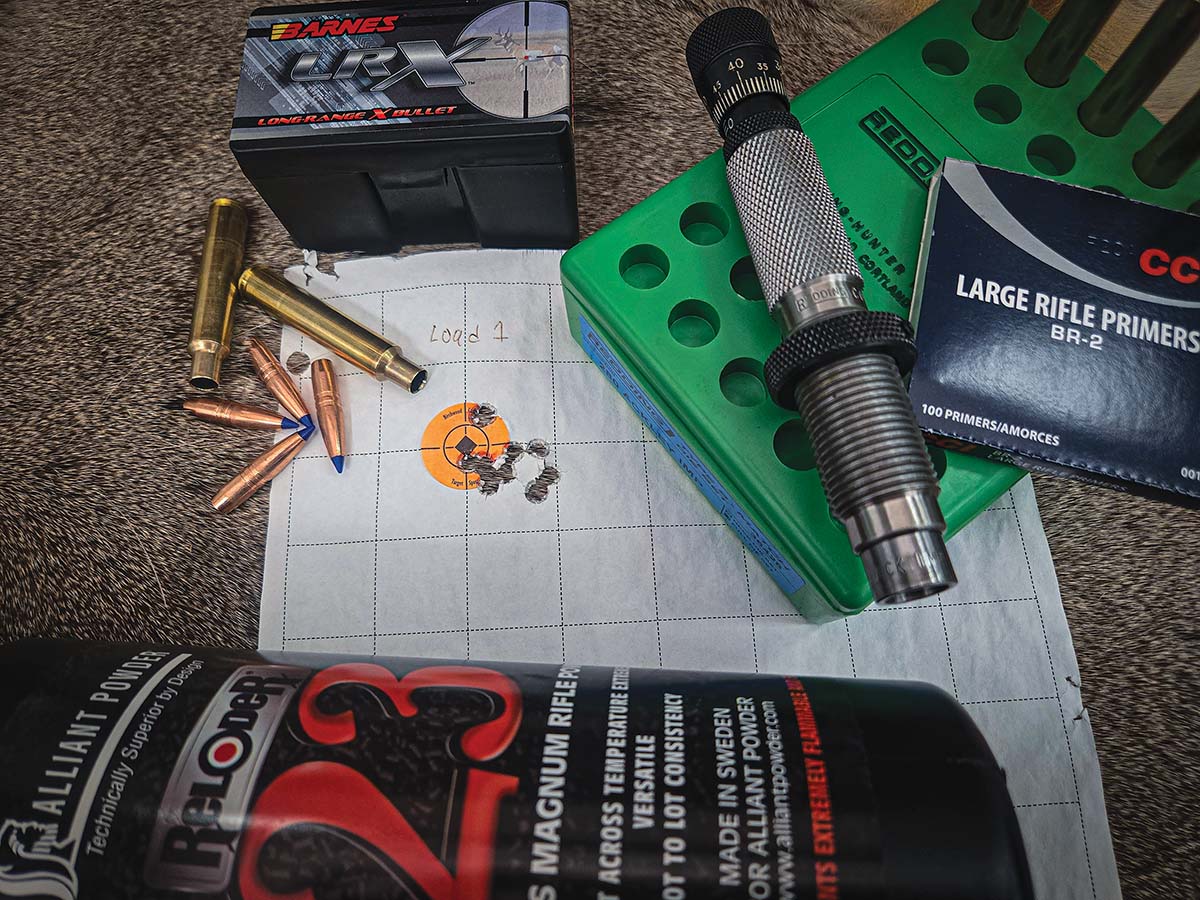
This 10-shot group was from handloads containing Alliant Reloder 23 powder and the 139-grain Barnes LRX bullet. The performance met the goals of the author and was worth verifying by testing another 20 rounds.
When I was 10 years old, my methodology for developing handloads for an upcoming hunt was vastly different from my procedure now, as is the technology and equipment. Some things will always have a place on my bench, such as my
RCBS Rock Chucker reloading press, which still cranks out fine ammunition and sits proudly alongside other presses. Some of my best loads have been assembled on that press. That also doesn’t mean that I don’t experiment and try new tools, methods and equipment. When it comes to load development, there have been countless methods and I’ll be the first to admit there is not a one-size-fits-all method that works. That is a statement I will take to the bank, because load development can change with circumstances and experience and what may work for one individual may not work well for another. So, rather than declaring my method the best and only way to do things, I would like to present one method that I am currently using to develop good, reliable and accurate loads for hunting. This has always been a major driving force behind my passion for handloading; when in the field, the last thing anyone should worry about is whether the ammunition and rifle will perform. We can alleviate such concerns with good test procedures and unbiased evaluation of loads.
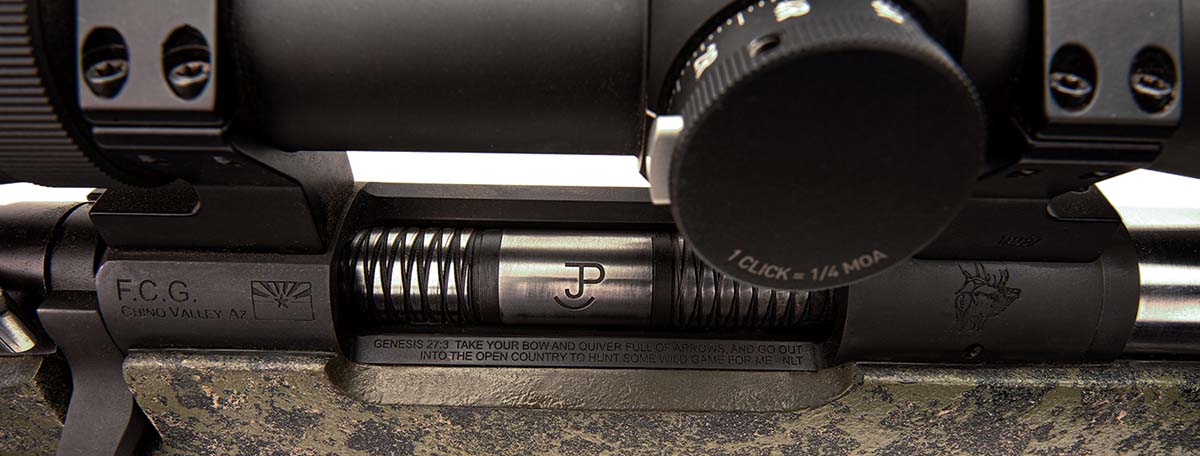
The rifle features some fine workmanship, as well as custom touches that really set the rifle apart from the engraving, to the custom “Hunters Weave” proprietary fluting pattern on the bolt.
Again, there is more than one way to skin a cat and I know plenty of people who have shot three shots to zero their rifle and are successful in the field. This method is a little more thorough than that and if done correctly, you have a load that is good in that rifle for a lifetime of hunting. I would encourage you to reflect on your own methods and see what information you can glean from the following procedure, hopefully picking up some ideas on how to improve your own load development.
The first step is to set a goal; ultimately, I want a load that will reliably and ethically put game down at the distances I am comfortable shooting. This means having a bullet that will perform to my own standards in terms of penetration, terminal performance and external ballistics.
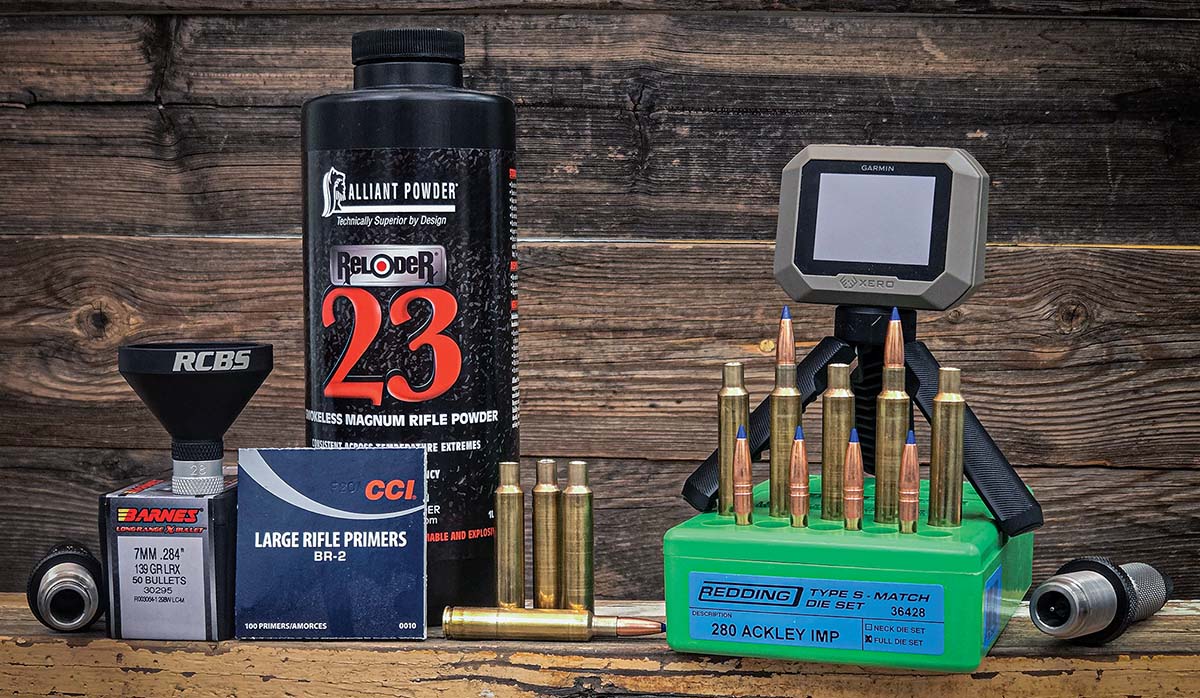
High-quality components and dies were selected for developing loads in this rifle. The Redding Type S Match Die Set is one of the best on the market for creating consistent, uniform handloads.
When it comes to selecting a bullet, there is no shortage of excellent options. For decades, Federal, Speer, Hornady, Nosler, Barnes, Berger and many others have been making hunting bullets, each with their own ideas on what the terminal performance should look like. My best advice here is to cut through the marketing and look at the raw terminal performance of the bullet. First-hand experience is the best form of education when it comes to such subjects and my experience has led me to choose the 139-grain
Barnes LRX for this particular rifle and cartridge combination. The terminal performance across the distances I am comfortable shooting is exceptional. The Barnes LRX offers good penetration and expansion as well as more than acceptable BC for my needs. It is not the only bullet I use for hunting by any means but it is a favorite.
Now that we have a goal and a bullet selected, it’s time to pick powders to test as well as which brand of cases to use, which, in my mind, go hand in hand with one another. Since the cartridge I was working with was the 280 Ackley Improved (AI), Peterson Cases were selected. They are of outstanding quality and are extremely uniform. Care was taken to ensure that cases were from the same lot and had an equal amount of firings on them in this particular instance; all cases were once fired. My handloads for hunting are certainly what I would qualify as match-grade, it doesn’t mean you have to get this deep into the weeds if you don’t want to but these are variables we all would be wise to consider when working up loads for game. The steel target will not run off into the woods and die slowly if a poor shot is made.
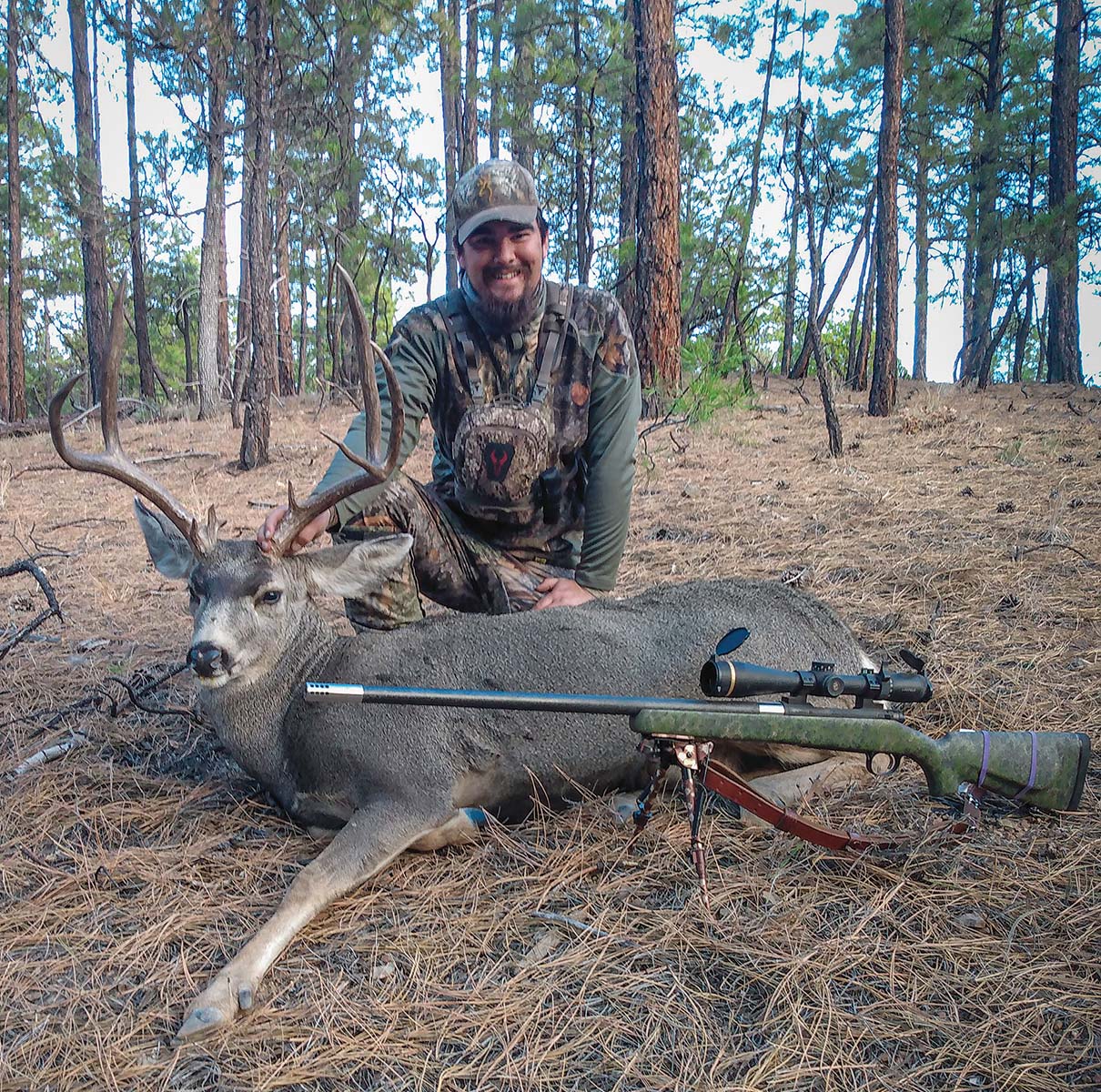
This Arizona Mule Deer was harvested on public land with loads that used this same method of testing except with the 145-grain Barnes LRX bullet from the same Remington 700 rifle chambered in 280 AI. This buck is just one of many mule deer this rifle has taken over the years.
When it comes to selecting powders, there is no shortage of options to choose from. Without getting too great into detail, I am looking for a powder that will fill the case while burning completely in my barrel. In this case, we are using a 26-inch barrel made by
Proof Research, and with the 280 AI many powders suitable for the 7mm Remington Magnum are good options. Another consideration is the temperature stability of the powder, lot-to-lot consistency and of course, availability. There are programs out there, such as
QuickLOAD Ballistic Software and
Gordons Reloading Tool (GRT), that can help make these calculations. Another alternative is to consult the load data for your cartridge alongside a burn rate chart and pick a few options that fall into that relative burn rate. Remember what I said about first hand experience? In this particular instance, I chose three powders to test.
Winchester StaBALL 6.5 on the fast end,
Hodgdon H-4831sc in the middle ground and
Alliant Reloder 23 on the slower end of the burn rate. These seemed like good options that covered a broad range of the acceptable burn rate powders in this cartridge and also seemed to fit well for the light-for-caliber bullet that would be used. Lastly, all three of these powders are consistent from lot to lot and are temperature stable as well, meaning that the ambient temperature has less effect on the velocity and pressure.
After the powders are selected, it was also time to select a primer, which usually is a straightforward process. However, some cartridges will benefit from some refinement here, especially when considering the powder type used and the amount of powder. The 7mm Remington Magnum generally calls for a magnum primer. Despite how close, ballistically speaking, the 280 AI is to the 7mm Remington Magnum, the 280 AI generally calls for a standard rifle primer. In cases like this, I like to opt for something a little hotter than a standard primer but not a magnum primer, which can significantly raise pressures and affect the pressure curve of a given load. Another consideration is the vast temperature swings that can be encountered while hunting. It is for this reason that the primer becomes a more critical consideration, we want to ensure we have reliable ignition as well as consistent burn from shot to shot. With these variables in mind, the CCI BR-2 Primer was selected. It’s not as hot as a magnum primer but is a little hotter than a standard primer. Sadly, like temperature stability testing with propellants, these things are only learned through much experimenting and trial and error. It does go to show how vital good test procedures are and the benefits they bring in terms of practicality in the field.
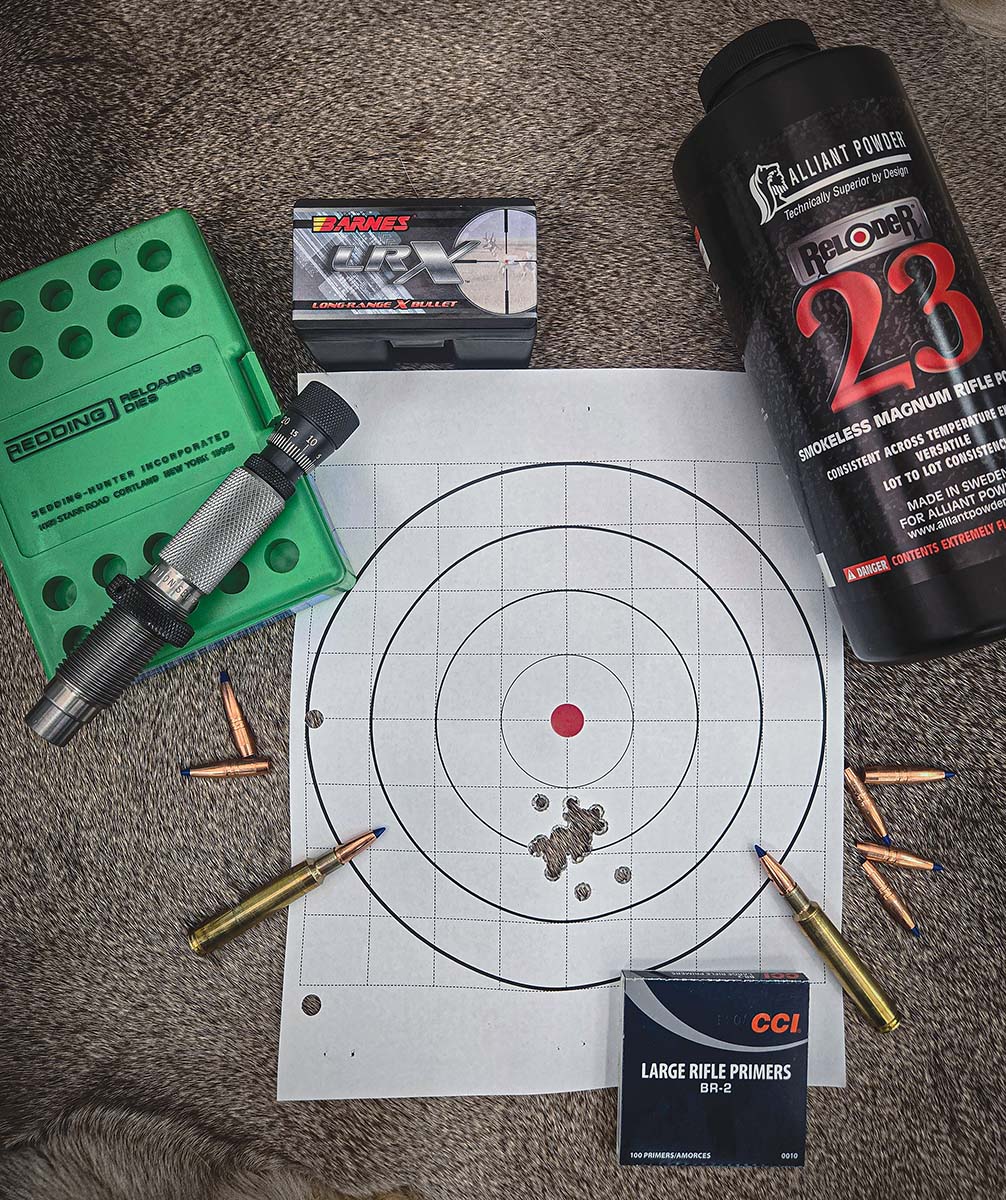
The final leg of testing was to shoot 20 rounds to verify that the load was good and met all goals, as well as to establish a reliable zero on the rifle. This 20-round group measured out to 1.55 inches with a mean radius of .38 inches.
With all the components selected, loads were assembled and the testing could begin. Having a good test procedure is equally as important as taking care to assemble high-quality handloads. In the case of big game cartridges such as the 280 AI, two groups of five shots each are fired into a target. I generally like to shoot these loads in a “round robin” fashion, meaning one round is fired from each load at its respective target. Once each load has one round on the paper, the process is repeated until every load has two rounds on paper, and so on. As easy as it would be to simply shoot three shots and call it good enough in doing so you are not thoroughly evaluating variables and stability of a given load. After all, for hunting loads, you want a load that is going to perform well in a variety of environmental conditions as well as circumstances.
Once the initial testing was complete and a total of 10 rounds per load were recorded on paper, the groups were analyzed, along with the velocity numbers and standard deviation was calculated for all 10 shots. It is from here that you can begin to make adjustments to your loads to achieve the desired accuracy or velocity. Another shortcut is to eliminate loads that did not perform. If you have an accuracy standard of, say, 1 MOA and you have a load that groups into 2 MOA in five shots, then that can be eliminated from the test. Setting realistic goals here is very important, as it is easy to chase your tail attempting to achieve better accuracy.
After a good load has been established, the final step is verification. This is also the perfect time to zero the rifle as well. I prefer to shoot four more groups of five shots, allowing the barrel to cool completely between groups. This ensures that I have multiple cold bore shots taken into account not only for the accuracy equation but also for the zero of the rifle itself. After 20 rounds are on target, a group measurement can be taken along with calculating the mean radius (the average measurement from the center of the group to the center of each shot). Then, you can zero the rifle based on that 20-shot group to ensure that your rifle’s cone of fire is accurately represented in your zero. You also now have 30 shots recorded in your notes to establish a good average velocity for that load, which you can plug into your ballistic calculator to have more refined solutions for longer shots.
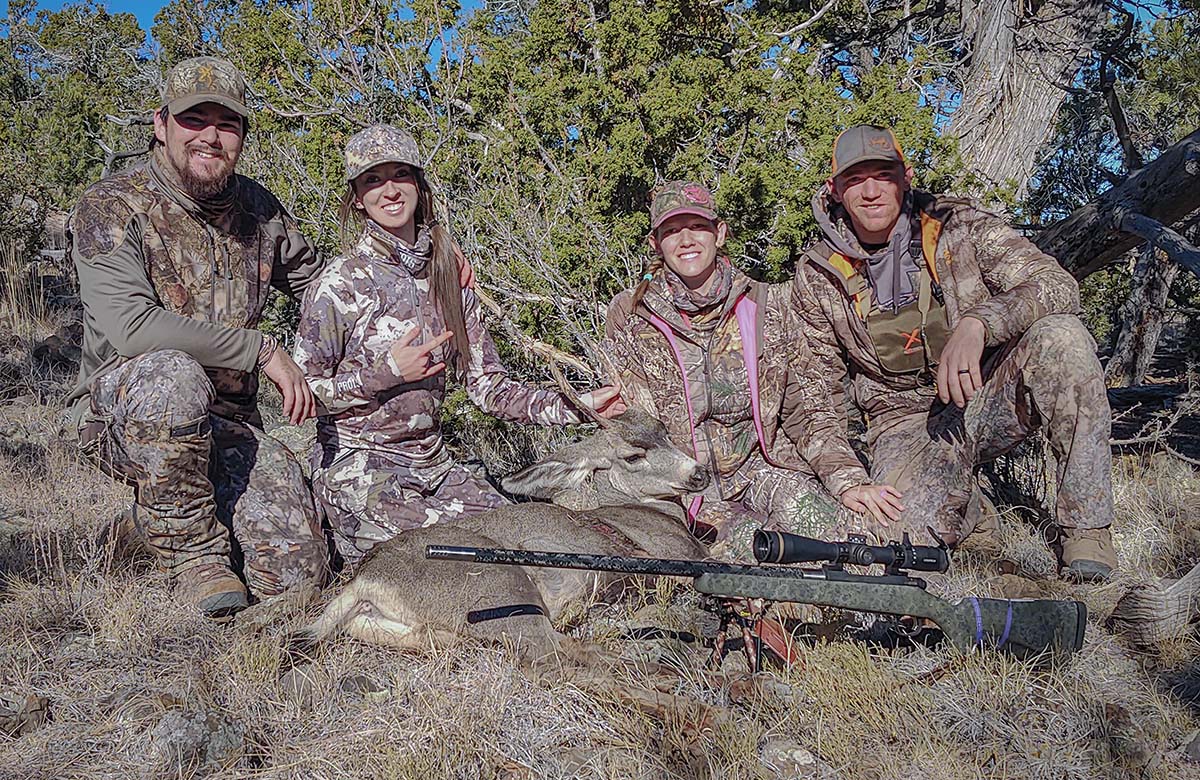
The author’s wife used this Remington 700 to tag out on her first big-game hunt. This buck was taken with a single shot using a Barnes 139-grain LRX bullet and is just one of a few mule deer this rifle and load combination has taken over the years.
I realize that this method is not for everyone and it is also not the most budget-friendly or economical way to develop good, accurate loads. However, it is one method that I can guarantee will work for anyone who is willing to try it. It will identify and address any inconsistencies in your methods wherever they may exist – as well as increasing your skill and knowledge along the way. This method, again, is not the only method out there, and it definitely follows the ‘more is better’ philosophy: more shots are recorded, more time is spent handloading and more time is spent shooting. However, if you enjoy doing these things, then isn’t doing more of it better?
If you would like to watch the accompanying video to this article, check out the video titled “280 AI Hunting Loads” on our YouTube channel: Handloader TV.







.jpg)


